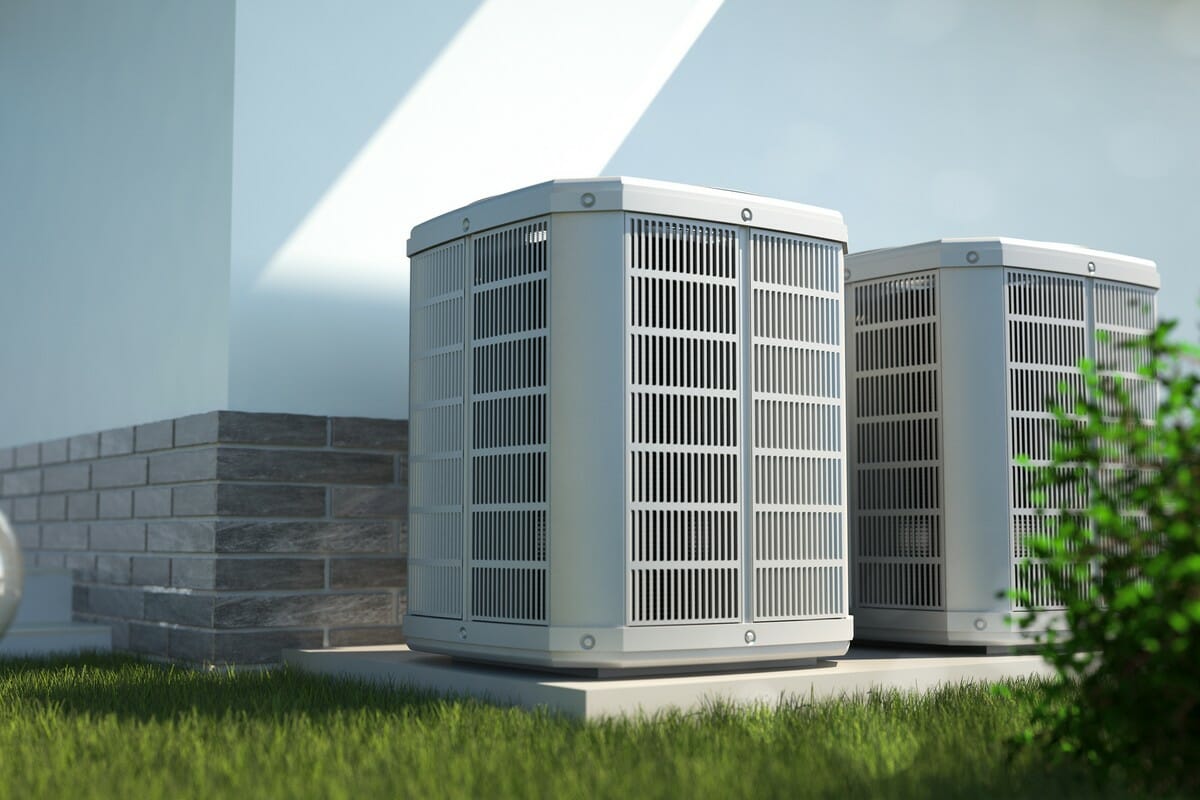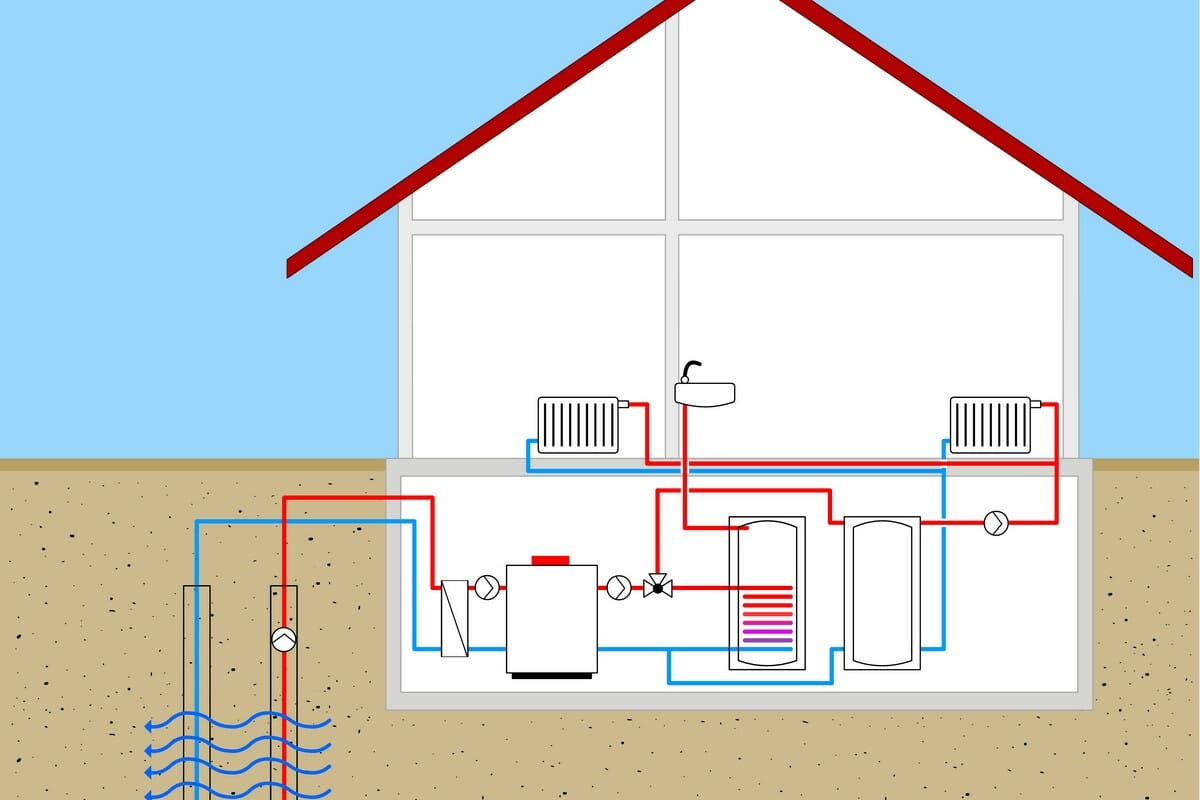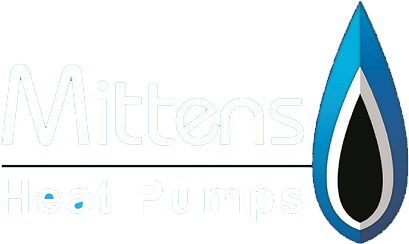Heat Sources and Sinks
Table of Contents
- 1 - Where Does the Heat Come From?
- 1.1 - Our Guarantee
- 1.2 - The Carnot Cycle and how it Applies to Heat Pumps
- 1.3 - Gas Compression and Expansion and how it Impacts Gas Temperature
- 1.4 - Expanded Gas Picks up Even Tiny Amounts of Heat
- 1.5 - How we use Air as a Source of Heat
- 1.6 - How we use the Ground as a Source of Heat
- 1.7 - Can we get Heat from Anywhere Else?
- 1.8 - Oil
- 1.9 - Wood or Coal Heaters
- 1.10 - The Sun
- 1.11 - Burning Fuels
- 1.12 - Electricity
- 1.13 - Waste Heat Recovery
- 2 - Heating Your Property
- 3 - How Auxiliary Heat Sources Work With Heat Pumps
Where Does the Heat Come From?

Latent heat is also present in the air. Heat can be extracted from the air at temperatures as low as -20°C degrees. That makes the UK climate ideal for heating your home using an air source heat pump system, even on the coldest of days.
Our Guarantee
- Over Six Years Experience
- Unrivaled Experience
- An Exceptional Service
- Unbeatable Value For Money
- Industry-approved Scaffolders
- A Full Range of Heat Pumps Services
- Professional, Reliable and Diligent
- 100% Safety and Satisfaction
The Carnot Cycle and how it Applies to Heat Pumps
The Carnot Cycle is the brainchild of a mathematician called Sadi Carnot who lived in 1824 France. The Carnot Cycle is a working cycle in the improvement of the efficiency in heat engines.
The Carnot Cycle represents the highest possible efficiency for reservoirs. Theoretically, it is the ideal thermodynamic cycle (a system that has gone through several states before returning to its original state). The model can be practically reversed and used in heat pumps. As a device which applies external work to absorb heat, the highest possible efficiency can be calculated using the Carnot cycle.
Gas Compression and Expansion and how it Impacts Gas Temperature
Compression applies heat to gas in order to raise the temperature of the gas released from the compressor. Owing to the Joule-Thomson effect, pressure reducers cause the temperature at the gas outlet to drop. Hydrates may form or natural gas liquids may condense at low gas temperatures and other conditions.
Expanded Gas Picks up Even Tiny Amounts of Heat
When heated, solids, liquids, and gases expand. Heat causes the molecules of a substance to move faster (heat energy is converted to kinetic energy) which is why a gas volume increases more than a solid or liquid volume does when heated.
Gas Compression uses Relatively Low Energy
When a gas is compressed, the particles are pushed together. Gases are compressible since the mass of a gas consists of the vast volumes of free space between the air particles. Gas compression is done to increase the gas pressure and this is followed by a change in the gas state, which means a reduction in the temperature and volume of the amount of gas under compression.
For gas-based heat pumps, the compressor provides heating and cooling, depending on the heat pump cycle. Coolant circulated by the pump is mechanically evaporated and condensed repeatedly in this process to achieve heating and cooling.
Compressed Gas can be Used to Heat in a Variety of Ways
Compressed gases can emit heat into their surroundings due to this higher heating point and used to heat space or provide hot water. This heat release happens within the refrigeration condenser system. The refrigerant can condensate (become fluid) because of the heat which is lost. The fluid refrigerant volume is then reduced and transferred back to the vessel for isolation so that it can continue another cycle.
How we use Air as a Source of Heat
An air-source heat pump captures heat from the air outdoors. The heat is then used in your house for heating underfloor heating systems, radiators, and hot water. An air-source heat pump absorbs heat from the outside air just like a refrigerator extracts heat from its enclosed space.
Even when the temperature outside drops to -15°C, the heat pump system can still extract heat from the air. The heat is absorbed and goes through a compressor where its temperature is raised and supplied via heat exchangers to the house for heating.
How we use the Ground as a Source of Heat
At low temperatures, heat from the earth is extracted into a fluid within a loop of pipe buried in the ground. The fluid goes through a compressor which raises it to a higher temperature and can then heat water for the house’s heating and hot water circuits. In some areas, it is possible to absorb heat from volcanic activity which has even higher temperatures.
Can we get Heat from Anywhere Else?
There are several other sources from which heat can be generated apart from the air, water, and ground. These sources include:
Oil
Oil can be less costly than petrol in certain places. Oil also has a greater heat value than liquefied gas (LP). However, oil has some drawbacks. Oil pollutes more than gas, and at present, the heating systems are not as efficient. Oil-powered units that can condense flue gas don’t exist yet, but some are in development.
Wood or Coal Heaters
Wood and coal heaters operate well where a relatively high temperature enables them to have a sustained burn period. Unfortunately, when they are shut down with a load of fuel left, wood and particularly coal heaters will pollute the environment. If you want to use this form of heating, we suggest that you have some sort of heat storage in the device so that the heater can be used at reasonable times and with lower emissions. To this end, a storage system similar to a solar heating system functions very well.
The Sun
The sun is a natural heat energy source. Sunlight is essential for all living creatures that live on the earth. This heat-energy form is also called solar energy. Solar energy can be harnessed using solar panels in various configurations to considerable benefit to the environment.
Burning Fuels
Heat energy can be produced by the combustion of fuels. Fuel can be described as any combustible material capable of burning and giving energy. Kerosene, wood, biomass, coal, petrol, diesel, and gasoline are only a few examples. Bear in mind these can be harmful to the environment.
Electricity
Electricity is a type of energy that can be transformed into heat energy and is thus a source of energy. The clothes iron used in our domestic household, for example, uses electric energy to produce the heat we use in ironing our clothes. It remains an expensive source of heating, however.
Waste Heat Recovery
Most commercial systems produce significant quantities of overheat. Waste heat recovery is a method in which heat energy for some manufacturing processes is transferred to use in certain applications. Waste heat recovery boilers are used in many useful work applications.
We Are Also Available to Offer Heat Pumps Related Advice
Water Source Heat Pumps are very Similar to Ground Source Heat Pumps
A water source heat pump and ground source heat pump all operate on a common theory and model. Both remove heat from where it is available and transfer the heat to places where it is needed, offering summer cooling and winter heating. Heat is obtained and released using a refrigerant, or occasionally plain water, which circulates through a large network of pipes known as loop.
Solar Assisted Heating
This is a technology that incorporates thermal solar panels into heat pumps to form a single unit. The thermodynamic panel is very similar to a solar panel, however, unlike PV (Photovoltaic) panels or solar thermal panels designed to consume light energy, it is designed to absorb heat energy. The purpose of this system is to get a high COP (Coefficient of Performance) and then generate heat more efficiently, thus being a less costly means of heating than electricity.
Heating Your Property
Cut down your energy costs with heat pumps using a heat pump system which has a longer lifespan and has little or no negative impact on the environment. An effective heat pump, even on the coldest winter days, would definitely keep your house comfortable and cosy.
Owing to their low operating costs, heat pumps can result in substantial savings over conventional heating systems. For example, relative to a new gas boiler, a ground source heat pump will reduce electricity costs by at least 26%.
Can I use a Heat Pump With my Central Heating?
Yes, heat pumps can be used with central heating systems. In comparison to oil boilers which heat water to 60 or 65 degrees, heat pumps heat water to 30 or 35 degrees over a longer time period and is more stable. Therefore, heat pumps work best with underfloor heating and large radiators. Heat pumps can also be used with a separate low-temperature coil to heat a hot water tank.
How do Heat Pumps Work With Underfloor Heating?
For underfloor heating systems or heated air ventilation, air-source heat pumps perform especially well, as they work at low temperatures. Homes with no current central heating system will need one in order to run an air source heat pump.
Ground source heat pumps also work best with underfloor heating systems because they are designed to run at a lower water temperature than is commonly used in boiler and heater systems in the UK. They, therefore, make an excellent match for underfloor heating systems as well.
We recommend that the heating pipes be laid with 100mm spacing rather than the usual 200mm spacing because the heat produced is less than most conventional heat sources, about 35 – 55 degrees Celsius. As it is expensive to radiate enough heat if the piping is too far apart, this naturally implies that the heated water pipes be laid closer together.
Although the cost of using additional pipe will be higher, the continuing output would be significantly improved by using an underfloor heating system for air source heat pumps.
Do Heat Pumps Support HVAC?
HVAC stands for Heating, Ventilation, and Air Conditioning. It refers to a combination of technologies that deliver thermal comfort and optimal air quality indoors. A heat pump is simply a type of HVAC equipment which can provide both heat and cooling. A heat pump absorbs heat from the air, water, or ground and transfers it either inside or back out based on the need of the room – air conditioning or heating.
Heat Pump Type
How Auxiliary Heat Sources Work With Heat Pumps
During hot weather, heat pumps collect heat inside a building much as air conditioners do and emit it externally. Heat pumps collect heat outside the house at freezing winter temperatures and transfer it inside.

Although some heat pumps possess this auxiliary heating ability, others do not. Auxiliary heat requires heating with electric resistance which is much less efficient and more costly than a heat pump.
A heating machine trapped in AUX power would also increase your electricity bill. If you have a heat pump, it is better to raise the heat setting by only two degrees at a time rather than let the auxiliary heat kick in.
We Are Also Available to Offer Heat Pumps Related Advice
